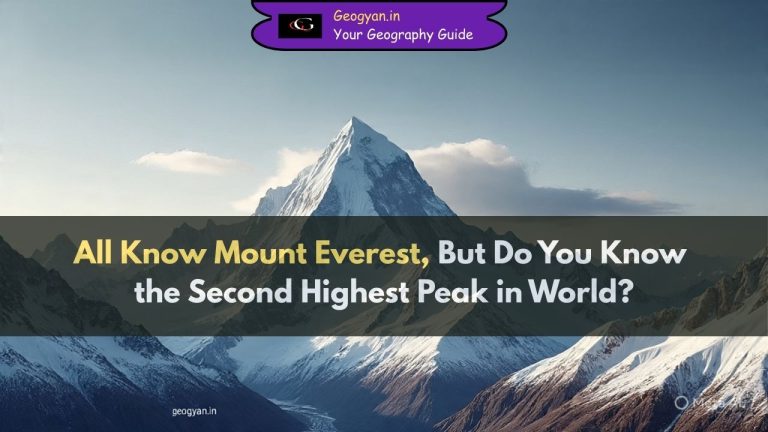Estimated reading time: 6 minutes
Table of contents
Introduction
Latitude and longitude are two fundamental concepts used in geography to locate any point on the Earth’s surface. Latitude measures the angular distance of a point north or south of the equator, while longitude measures the angular distance of a point east or west of the Prime Meridian.
Together, these coordinates provide a precise location for any place on the Earth’s surface. Understanding how to use latitude and longitude is crucial for navigation, mapping, and determining time zones. In this text, we will explore these concepts in detail, including how to measure them and their significance in determining distance and time.
Latitude
Latitude is the angular distance of a point on the earth’s surface, in degrees, from the center of the Earth, as illustrated in Figure 1 (b). It runs parallel to the equator, which is situated halfway between the North and South Poles. The equator is considered 0°, while the North and South Poles are 90°N and 90°S, respectively.
The lines of latitude between poles are called parallels of latitude, and they form circles on a globe that decrease in size toward the poles. Lines of latitude are typically drawn every 1°, but for precise location on a map, each degree can be divided into 60 minutes and each minute into 60 seconds.
The most important lines of latitude include the equator 0°, the Tropic of Cancer (23.5°N), the Tropic of Capricorn (23.5°S), the Arctic Circle (66.5°N), and the Antarctic Circle (66.5°S). As the Earth is slightly flattened at the poles, the linear distance of a degree of latitude at the poles is slightly greater than at the equator.
For example, a degree of latitude is about 68.704 miles at the equator, 69.054 miles at 45°, and 69.407 miles at the poles. On average, a degree of latitude is approximately 69 miles, which is a useful figure for calculating distances to any location. For instance, since Bombay is located at 18.55°N, it is approximately 1,280 miles from the equator.
Using an atlas, determine the approximate distance of following places from the equator. For example, Singapore is situated at approximately 1.35°N, Kolkata at 22.57°N, Paris at 48.85°N, New York at 40.71°N, Buenos Aires at 34.6°S, and Auckland at 36.85°S.

Longitude
Longitude refers to the angular distance of a point on the earth’s surface, in degrees, along the equator, either east or west of the Prime Meridian, as illustrated in Figure 1(a). The lines of longitude, also known as meridians, are depicted as a series of semi-circles that run from pole to pole and intersect the equator. Unlike the equator, which is centered between the poles, any meridian could have served as the basis for longitude measurement.
In 1884, an international agreement was reached to select the meridian that passes through the Royal Astronomical Observatory at Greenwich, near London, as the zero meridians, known as the Prime Meridian (0°). From this reference point, all other meridians are numbered and radiate eastward and westward up to 180°.
As the Earth is spherical with a circumference of approximately 25,000 miles, each of the 360 degrees of longitude measures approximately 69.1 miles. However, the degree of longitude varies in length based on the latitude. The meridians of longitude converge at the poles, enclosing a progressively narrower space, while the parallels of latitude become shorter poleward.
Thus, the degree of longitude is longest at the equator, measuring about 69.172 miles, and shortest at the poles, where it equals zero miles. At 25°, it measures 62.73 miles; at 45°, it measures 49 miles, and at 75°, it measures 18 miles. The discrepancies in the length of degrees of longitude outside the tropics are significant, making them unsuitable for calculating distances, unlike latitude.
Nevertheless, the meridians of longitude are essential in determining local time with Greenwich Mean Time (GMT), which is sometimes referred to as World Time.

Conclusion
In conclusion, latitude and longitude are crucial concepts in geography that help us locate any point on the Earth’s surface. They provide a universal system for identifying places and are essential for navigation, mapping, and determining time zones.
By understanding how to measure and use latitude and longitude, we can accurately locate any place on Earth, calculate distances, and determine local time. The lines of latitude and longitude form a grid system that allows us to pinpoint any location on the planet. As such, these concepts play a vital role in various fields such as cartography, geology, and astronomy, making them an essential part of our understanding of the world.
FAQs
What is latitude?
What is the equator?
What are the most important lines of latitude?
How does the distance of a degree of latitude change based on the location?
How can the distance to a location be calculated using latitude?
What is longitude and how is it measured on Earth’s surface?
You May Also Like






























2 Responses